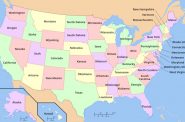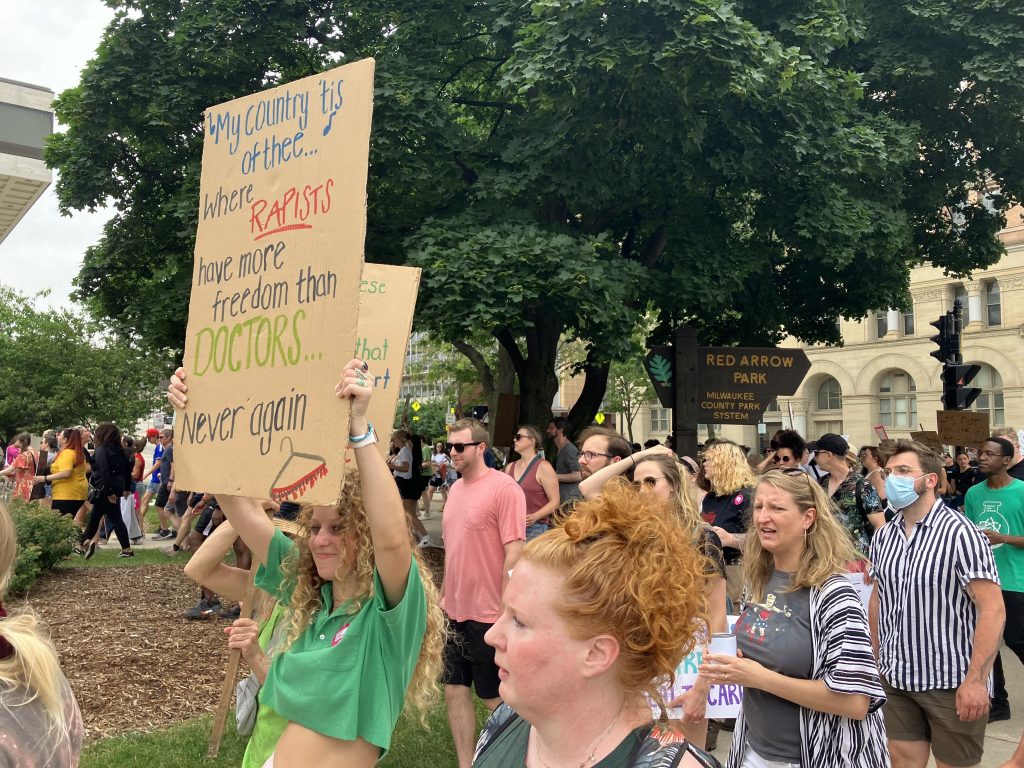Abortions Up In U.S., Down in State
Rising since 2017 and even after Dobbs decision. But declining in Wisconsin since 2022.
After years of gradual decrease, the number of abortions has reversed course and started growing again. According to data gathered by the Guttmacher Institute (here and here), the number of abortions in the US declined from about 1.6 million per year in the 1980s to a low of about 860,000 in 2017. Since then, it has started to grow again, reaching one million last year, as shown in the next graph.
This growth continued despite the U.S. Supreme Court’s ruling in on June 24, 2022, in Dobbs v. Jackson Women’s Health Organization overturning the constitutional right to abortion previously established in the Roe v. Wade and Planned Parenthood v. Casey cases.
As reported by the Pew Foundation, Guttmacher gets its data by contacting every known abortion provider – clinics, hospitals and physicians’ offices – in the country. It uses questionnaires and health department data, then provides estimates for abortion providers that don’t respond. Pew goes on:
While the Guttmacher Institute supports abortion rights, its empirical data on abortions in the U.S. has been widely cited by groups and publications across the political spectrum, including by a number of those that disagree with its positions.
The federal government’s Centers for Disease Control and Prevention (CDC) also collects data on abortions. It compiles figures that are voluntarily reported by states’ central health agencies. Participation in this program is voluntary. Its latest totals do not include data from California, Maryland, New Hampshire or New Jersey, states that did not report data to the CDC.
The next graph shows the number of abortions that Guttmacher found for Wisconsin and its neighboring states–Illinois, Michigan, Minnesota, and Iowa–as a percentage of population of the state in which the abortion took place.
Note that the five states followed parallel tracks: in general, when abortions went down in one state so did they in the others. The exception to this rule is Wisconsin in the most recent, 2023, survey. In Wisconsin, the number of abortions dropped from 6,960 in 2020 to 860 in 2023.
The spike in Illinois abortions not only reflects patients from Wisconsin following the shutdown of its clinics, but patients from its neighbors—Missouri, Indiana, and Kentucky–that completely ban abortion.
Overall, the total number of abortions nationwide grew 11% between 2020 and 2023. The growth in all states that did not ban them was 26%. In states whose neighbors banned abortions the increase was 38%.
In a case called Josh Kaul v. Joel Urmanski, Dane County Circuit Court Judge Diane Schlipper ruled that the 1849 law outlawed only feticide, in which the fetus died as the result of violence against the expectant mother, not a consensual abortion.
Joel Urmanski, the Sheboygan County District Attorney, has emerged as a major advocate of the proposition that the 1849 law was effectively revived by the Dobbs decision and that it bans consensual abortions and not just feticide. He appealed Schlipper’s decision to the Wisconsin Court of Appeals.
Eventually the Wisconsin Supreme Court combined this appeal with a second case, called Planned Parenthood of Wisconsin v. Urmanski, which was been brought as an “original action,” meaning that the Supreme Court was asked to consider it without going through the lower courts. Urmanski submitted his brief this August. The response is due September 11.
What accounts for the increase in abortions despite the loss of the protection offered by the Roe decision? Guttmacher suggests three factors: the growing practice of telehealth for medication abortion avoiding the need to travel to another state; increased financial assistance for people seeking abortion; and legislation protecting abortion providers in states with legal abortion.
For several years, the Marquette Law School Poll has asked voters whether they support or oppose the right to abortion. Typically, the response has run two to one against government efforts to make abortion illegal. Yet supporters of bans continue to advocate for them.
Former Wisconsin Attorney General Brad Schimel played a major role in developing the legal argument against Roe and that if Roe were overturned, Wisconsin’s 1849 law would make abortion illegal in Wisconsin. Considering the unpopularity of his position, his plan to run for the Wisconsin Supreme Court may be an uphill battle.
If you think stories like this are important, become a member of Urban Milwaukee and help support real, independent journalism. Plus you get some cool added benefits.
Data Wonk
-
Life Expectancy in Wisconsin vs. Other States
 Dec 10th, 2025 by Bruce Thompson
Dec 10th, 2025 by Bruce Thompson
-
How Republicans Opened the Door To Redistricting
 Nov 26th, 2025 by Bruce Thompson
Nov 26th, 2025 by Bruce Thompson
-
The Connection Between Life Expectancy, Poverty and Partisanship
 Nov 21st, 2025 by Bruce Thompson
Nov 21st, 2025 by Bruce Thompson
























